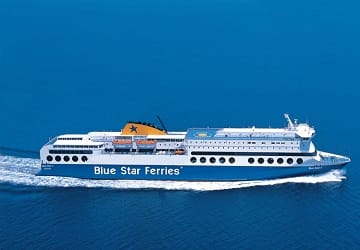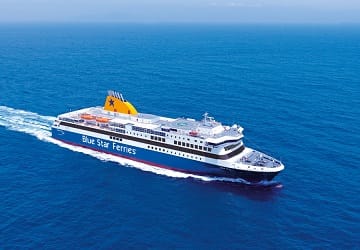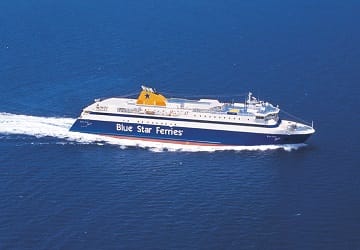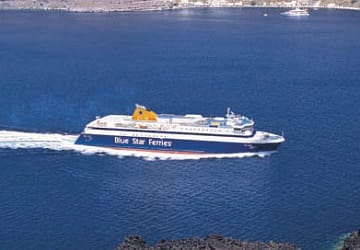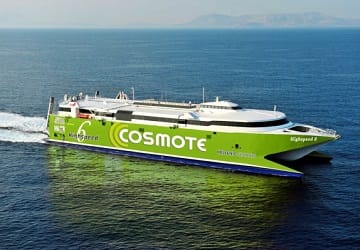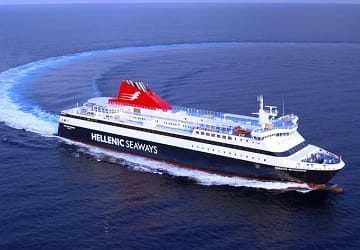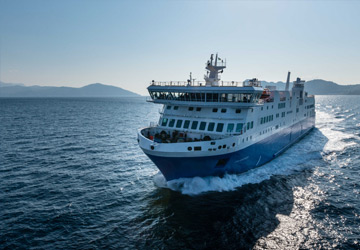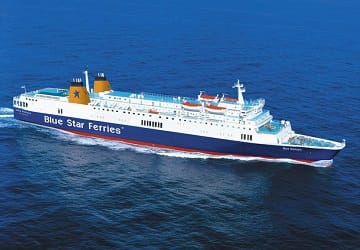
-
Recent Searches
Recent Searches
- Travel Alerts
- My Account
- Customer Service
-
United Kingdom
Piraeus to Syros Ferry
The Piraeus Syros ferry route connects Athens with Cyclades Islands and is currently operated by 3 ferry companies. Blue Star Ferries operate their crossing up to 14 times per week, Sea Jets 2 times per week & the Hellenic Seaways service is available up to 7 times per week.
There are a combined 23 sailings available per week on the Piraeus Syros crossing between Athens and Cyclades Islands and with 3 ferry companies on offer it is advisable to compare all to make sure you get the best fare at the time that you want to travel.
Piraeus to Syros Ferry Alternatives
-

-
Get price
-
Piraeus - Syros Ferry Operators
-
- 14 Sailings Weekly 3 hr 20 min
- Get price
-
- 2 Sailings Weekly 2 hr 10 min
- Get price
-
- 7 Sailings Weekly 2 hr 55 min
- Get price
Average Piraeus Syros Prices
Prices shown represent the average one way price paid by our customers. The most common booking on the Piraeus Syros route is a car and 2 passengers.
Piraeus Syros Ferry reviews
-
"Five stars for Blue Star ferries"
We are annual travelers to the Greek Island of Syros and have always relied on Blue Star for our travel and connections. They are just what is needed, efficient, timely and ideal for the 4 hour sailing. It always gets the adventure off to a great start and reasonably priced as they are we will continue to use the service for the foreseeable future.
'Ian' travelled Piraeus Syros with Blue Star Ferries on Blue Star Patmos
Read More Read Less -
"Athens to Syros"
All trip went well and without any delay. Perfect.
'Ewelina' travelled Piraeus Syros with Blue Star Ferries on Blue Star 1
Read More Read Less -
"Travel well"
The ship is very big, lots of different areas to sit. Food choices are excellent and reasonably priced. Everything is very well organised, there are loads of staff around. A lovely way to travel.
'Anonymous' travelled Piraeus Syros with Blue Star Ferries
Read More Read Less -
"A very nice way to travel."
I had a lovely comfortable trip. I purchased a seat for my passage and was comfortable the whole time. You can charge devices in there, also. I enjoyed walking around the ship knowing my seat would still be there. Nice large windows for good view. Food at the cafe was good with fast service. Restrooms very clean. Staff helpful and respectful.
'Linda' travelled Piraeus Syros with Blue Star Ferries on Blue Star Naxos
Read More Read Less
Piraeus Guide
The port city of Piraeus in Greece lies on the Saronic Gulf in the Attica region of the country and forms part of the Athens urban area, with the centre of Athens located some 12 km from the port. The centre of Piraeus is generally congested with traffic and tends not to be place where tourists would go. The area has many of the facilities you would expect of a non-tourist town: banks, public buildings, pedestrian areas, shopping streets and the like. The area around Zea Marina and Mikrolimano Harbour are perhaps the most attractive part of Piraeus and have a good selection of restaurants, cafes and bars.
Piraeus is Greece's main port and the largest in Europe and the third largest in the world. Unsurprisingly, it is the hub of Greece's maritime industries and the base for its merchant navy. Having recently undergone a refurbishment, facilities at the port have improved and include ATM's, bureau de change, restaurants, cafes, bars and a number of travel agencies selling ferry tickets. destinations served by the port include the island of Crete, the Cyclades Islands, the Dodecanese Islands, the eastern parts of Greece and parts of the northern and eastern Aegean Sea.
Syros Guide
The Greek island of Syros is one of the Cyclades group of islands and is unusual in that the island's architecture is more medieval rather than the more typical Cycladic. The island's capital is Ermoupolis and has some fine examples of Venetian mansions to see. In the Vaporia quarter of the capital visitors will find some lovely large churches and impressive neoclassical buildings, such as the Town Hall and Apollo Theatre in the central square. Also popular with visitors are the island's beaches which are well equipped for tourists and have a good range of facilities.
The island can trace its history back to the 3rd millennium BC where signs of inhabitation have been found in the Halandriani and Kastri parts of the island. Artefacts found indicate that there was some kind of metal workshop on the island which possibly had a trading relationship with Asia Minor. The Samians occupied the island in the 6th century BC and is when many of the island's inhabitants moved to the island. At that time, the important physician and philosopher Pherecydis was born in Syros and some years later he went to Samos and became the teacher of Pythagoras.

